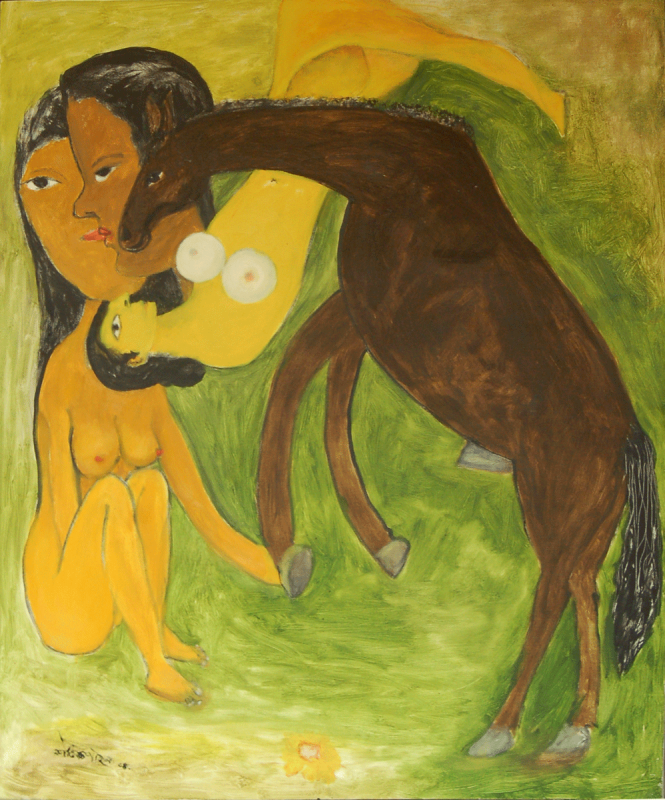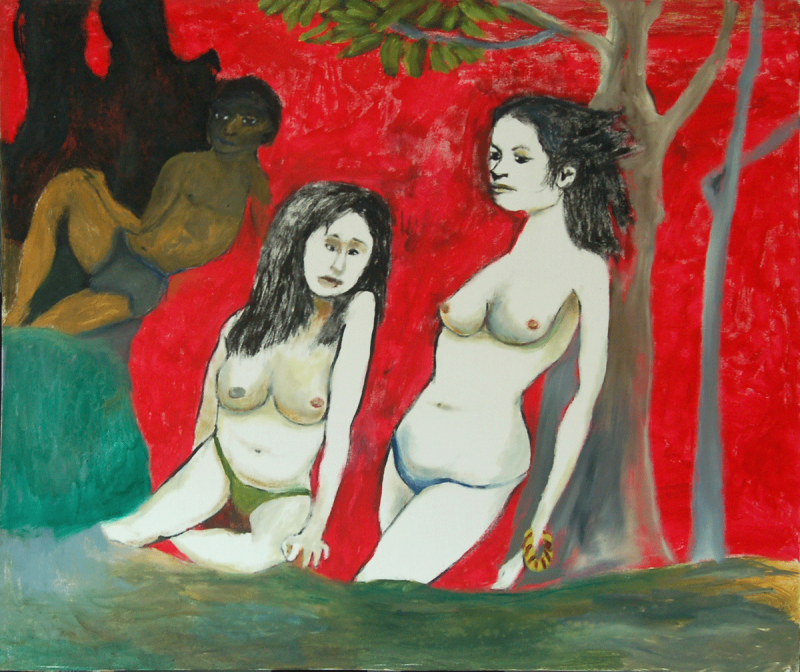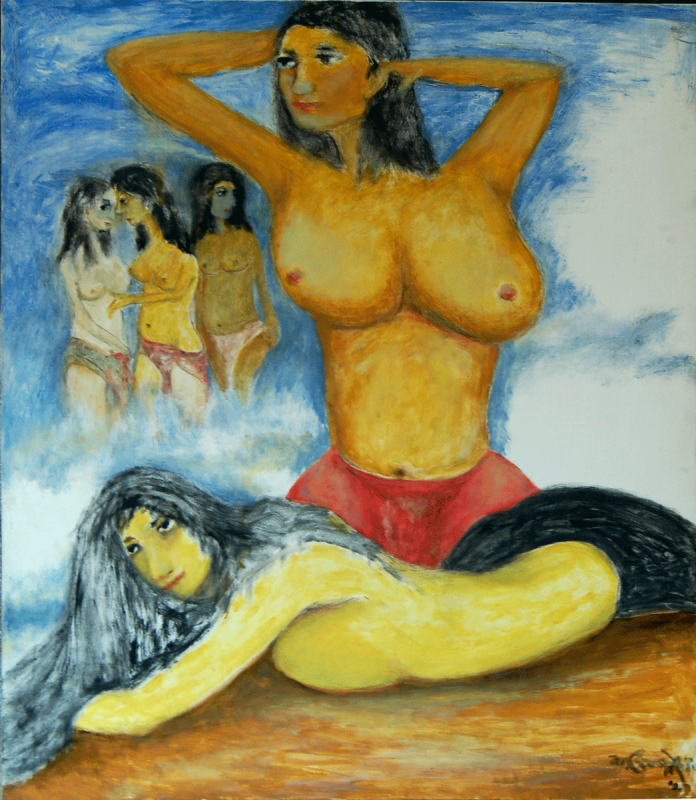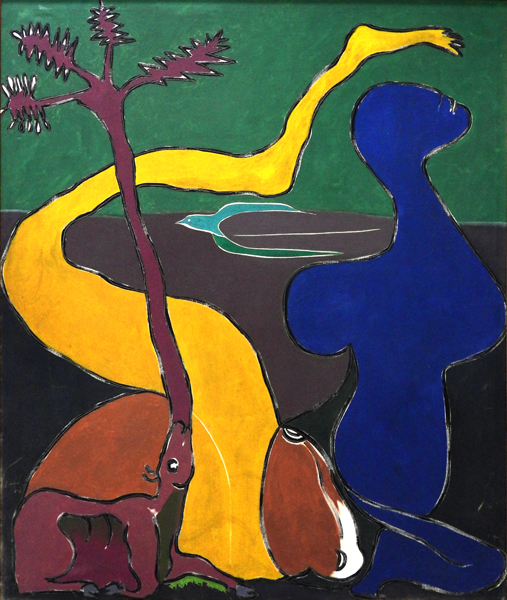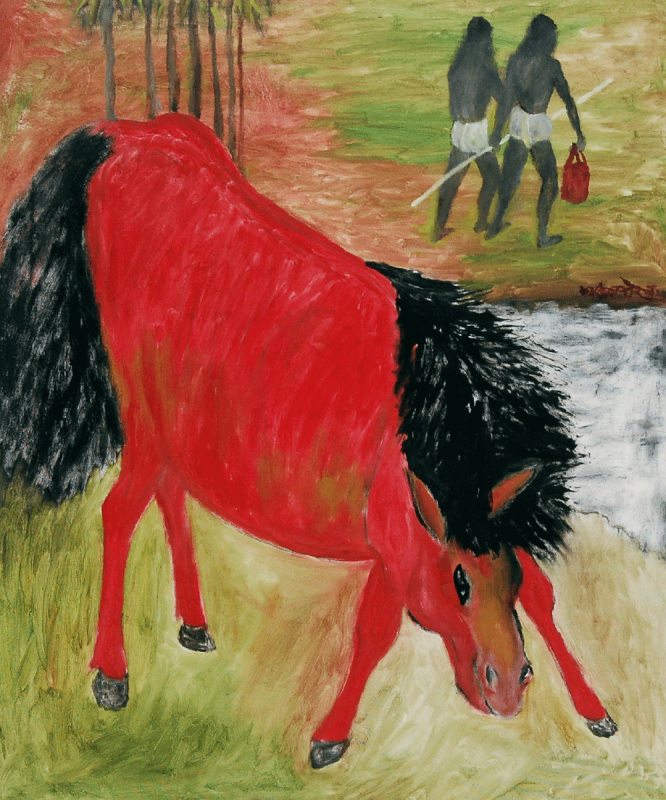News & Blog
Kartick Chandra Pyne: A Forgotten Surrealist, Rediscovered
Kartick Chandra Pyne (1931–2017) was one of India’s earliest and most original surrealist painters, whose career traversed obscurity, hardship, and finally, belated recognition. Born into a traditional family of gold merchants in Kolkata on November 15, 1931, Pyne was nurtured in a culturally rich environment. He pursued formal education at the Government College of Art & Craft, Kolkata, graduating in 1955, and was deeply influenced by the vibrant artistic atmosphere of post-independence Bengal. His cousin, Ganesh Pyne, would go on to become a towering name in Indian modernism, while Kartick, though equally gifted, remained largely in the shadows.
While Indian modern art in the mid-20th century was dominated by movements like Cubism, Expressionism, and Neo-Tantrism, Kartick Pyne charted an independent path, forging a deeply personal visual language rooted in surrealism. His works combined fantastical elements, dreamlike figuration, metaphoric narratives, and childlike whimsy—blending Indian mythological and folk themes with influences of Western modernists such as Joan Miró, Fernand Léger, and Paul Klee. He refused to follow market trends or fashionable schools of art, remaining committed to his internal vision even when it meant being ignored by galleries and critics.
Despite the intensity and uniqueness of his work, Pyne remained largely unknown to the Indian art world through much of his life. He lived modestly, often selling works at nominal prices to survive. His artistic output was prolific, but his reclusive nature and lack of market awareness kept him outside the growing collector circuit.
A turning point came in the late 1990s, when Vikram Bachhawat, founder of Aakriti Art Gallery, stumbled upon a modest exhibition of Pyne’s paintings at Chitrakoot Art Gallery, Kolkata. The surreal and deeply imaginative quality of the works struck a chord. Through a common friend, Vikram acquired a body of works from the show. At the time, there was little awareness or demand for Kartick Pyne’s paintings, and his name was virtually unknown in mainstream art circles.
Some years later, Vikram visited the artist’s home with an artist friend and was shocked to see the humble and difficult conditions in which Pyne was living. Despite a lifetime of painting, he had little to show in terms of financial stability or recognition. When asked if he had any works available, Pyne shyly brought out four paintings. He had no idea of their market value, and when Vikram offered him multiple times more than he had ever received from galleries, the elderly artist was overcome with emotion—tears welled up in his eyes, a moment of both disbelief and gratitude.
Recognizing the injustice of the neglect, Vikram took it upon himself to revive interest in Pyne’s work. In 2005, he curated a landmark retrospective exhibition at Aakriti Art Gallery, spanning works from the 1950s to the early 2000s. The show turned into a phenomenon—over 80% of the works were sold on the opening day itself, attended by collectors, critics, and fellow artists. For Kartick Chandra Pyne, it was his first true moment in the sun after decades of anonymity.
On the eve of the show’s inauguration, Aakriti Art Gallery gifted him a Maruti Van, the first car he ever owned—a symbolic gesture of dignity and recognition.
Another crucial champion of Kartick Pyne’s work was the noted Japanese collector Masanori Fukuoka, founder of the Glennbrae Art Museum, Japan. Fukuoka was known for his visionary interest in Indian modern art and recognized the haunting beauty of Pyne’s surrealism. Over the years, he acquired a significant body of Pyne’s large works, now housed in the Glennbrae Museum’s permanent collection—making Pyne one of the few Indian artists to be extensively collected in Japan during his lifetime. This international endorsement added a new dimension to Pyne’s legacy and introduced his works to a global audience.
Pyne’s paintings continued to evolve in subject and form. Even after suffering a paralytic stroke in 1994, which left the left side of his body impaired, he continued to paint smaller works with unshaken passion. In the late 1990s, he produced a notable series of nudes—elegant, spare, and full of quiet grace—demonstrating his undiminished creative energy. One of his early works, “Moon Bath” (1962), was also featured in the prestigious exhibition “100 Years of Modern Indian Art” at the Fukuoka Art Museum, Japan in 1979.
In 2005, his painting “Bird in a Cage” set a record price at Sotheby’s New York, affirming his stature in the international market and finally granting him overdue recognition.
Throughout his life, Pyne received several honors, including awards from the Academy of Fine Arts, Kolkata, and the Shilpi Maha Samman and Abanindra Puraskar from the Government of West Bengal. His works are now part of major collections including the National Gallery of Modern Art, the Birla Academy of Art and Culture, and several respected private and institutional collections across India, Europe, and Japan.
Kartick Chandra Pyne passed away on September 17, 2017, in Kolkata. Though he lived much of his life in quiet hardship, his art has outlived that silence—speaking in a language of dreams, myths, and metaphors. Thanks to patrons like Vikram Bachhawat and collectors like Masanori Fukuoka, Pyne’s surreal worlds now have the audience they always deserved.
